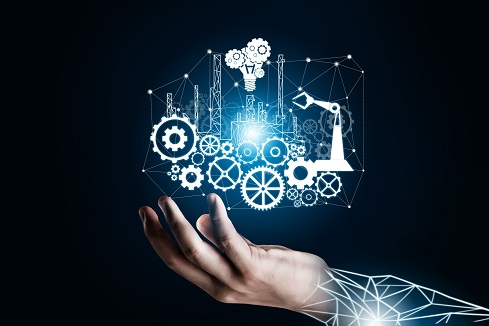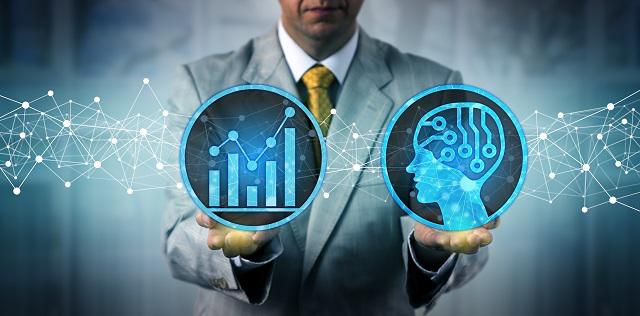Humans have an innate desire to grow, learn, and progress. We have advanced toward a brighter future since the dawn of time. From making fire with stones to instructing a virtual assistant to turn on or off the electricity, humans have come a long way. Some will claim that robots have taken over and replaced people, but we are the ones controlling the steer.
Whether you keep up with fashion trends or not, you’ve probably heard about artificial intelligence (AI) and machine learning (ML). We use these technologies daily, artificial intelligence is one of the most talked-about issues in business, and there are many theories regarding its potential outcomes.
The most successful corporate teams don’t fear AI; they embrace it. AI and machine learning (ML) provide capacities far beyond those of humans. In the last four years, the usage of AI in business has increased by over 270%, impacting every facet of operations from marketing and consumer insights to hiring new employees. This drive is largely motivated by AI’s enormous potential to boost worker productivity.
Hubstaff is one example of an A.I.-based software tool that records keystrokes, mouse movements, and the websites that employees visit while they are at work. To verify that employees are using their computers, Time Doctor periodically records videos and screenshots of user screens using webcams. Isaak tracks workplace interactions and combines the information with personnel files to identify the most cooperative workers. Additionally, Enable tracks how long employees spend completing tasks, offers tips on how to work faster, and awards productivity scores. The grades can be used by managers to determine which employees are worth keeping and which ones aren’t.
So, let’s enlist a few of the ways in where Artificial intelligence has helped the business world to escalate its productivity and efficiency.
HOW IS AI ESCALATING BUSINESS WORLD?
There has been a significant investment in AI technology. Startups using AI alone garnered $18.5 billion in venture funding in 2019. By 2023, it is expected that total investments in the industry would be close to $100 billion. The commercial world will soon feel the influence of this form of finance.
Automating the Business Practices
When discussing AI in the workplace, worry frequently accompanies it, especially regarding job security. Up until recently, it was thought that automation brought on by AI will eliminate a large portion of the workforce by 2033. However, this viewpoint has now been fully recalibrated by professionals in the subject.
Automation is much more likely to focus on particular job duties, especially monotonous ones that we would classify as “low-value.” AI that increases productivity has already been developed by numerous businesses. For instance, Deloitte has developed an AI tool that can scan and extract information from difficult legal papers. This technology streamlines and expedites the contract negotiating process by eliminating the previously necessary lost search time. Employees are therefore freed to concentrate on tasks that benefit the company and better utilize their expertise.
Assisting Business To Forecast
One of the key benefits of using machine learning for business forecasting is that you can use the hundreds of metrics at your disposal and take each one into account for the current prediction to make plans that are much more precise than those made using manual approaches.
Because of the accuracy, scale, and adaptability of AI-based forecasting, businesses have resorted to it. Particularly, AI-based demand projections can adapt in real-time to shifting market conditions and consumer behaviour, giving users an advantage over rival businesses by helping them make smarter business decisions.
By taking into consideration all these variables, AI-based forecasting may not only give the accuracy you require, but a turn-key solution is also entirely autonomous, continuously updating estimates as patterns change to better guide your decisions. An array of machine learning algorithms is combined in an AI-based forecasting solution to improve forecasts. After that, the system chooses a model that is specially tailored for the specific business metric you are forecasting.
Predict Maintenance
Equipment conditions can be monitored by sensors, and the data can be continuously analyzed. Machines can now diagnose their problems, order replacement components, and arrange for a field specialist to visit when necessary thanks to technology. Algorithms built on big data can forecast equipment breakdowns in the future, moving predictive maintenance one step further. According to research, AI-enhanced predictive maintenance of industrial machinery can lower maintenance costs by 10%, downtime by 20%, and inspection expenses by 25%.
Automated Material Procurement
Now businesses are no longer dependent on human efficiency to ensure the timely procurement of material. With the integration of AI into the ERP, businesses do not have to tackle problems such as material stock out, or high ordering costs. Instead, whenever the inventory falls below the threshold, the AI-governed ERP software intimates the limits. This AI-aided material procurement prevents the shortage of material which in turn ensures efficient productivity.
Sentiment Analysis to gauge customers’ needs and emotions. Businesses may now analyze enormous volumes of data, comprehend how their customers feel, and combine all kinds of social data to learn about their customers’ wants, intents, and preferences.
The text can include remarks on goods or services, dialogues from blogs or social media, etc. Businesses may identify customer opinions and gauge comments left on millions of web pages, reviews, and forums by using sentiment analysis.
Assist Manage Finance
Since finance is the major fuel to all the activities; therefore, it comes with a need of managing the company’s budget to prevent insolvency or liquidation. Without having money, the organization won’t be able to handle the expenses, pay off the liabilities and debts, manage employee remuneration or buy assets.
But AI intervention has helped the business to manage their finance which couldn’t be possible by humans only. Financial institutions can improve their decision-making with tools like data science modelling tools, automated machine learning, and AI-enabled enterprise software. Artificial intelligence can help top management to analyze which project needs further investment and which needs to be stopped asap as it is earning no return.
Personalized Manufacturing
Software intelligence advances in AI enable businesses to advance personalization by creating goods and services that are highly relevant to specific customers. Because personalization increases sales, it is essential for today’s organizations. A recent survey found that 20% of consumers would be ready to pay a 20% premium for customized goods or services. 83 percent of consumers in the U.S. and the U.K., say Accenture is open to reputable retailers using their personal information to provide them personalized and targeted offers, recommendations, and items.
This Ai aided personalization best suits to Just-in-time environment where the production is pulled by the demand and need. Employing AI tools organize can gauge customers’ needs and customize the production specifications accordingly.
Quality Control
Quality is of prime when it comes to product and organization value. It is something people can’t compromise on since they have been paying money for it. There are various top organizations which have already coined their names in the market regarding quality. And they stand no limitation to prevent them to achieve it.
For example, BMW employs artificial intelligence (AI) to analyse component photos from its production line. AI enables it to identify quality standard deviations in real time. An AI programme analyses vehicle order data with a real-time image of the model designation of the freshly manufactured automobile in the final inspection area at the Dingolfing plant of the BMW Group. The final inspection team is notified if the live image and order data don’t match, for instance, if a designation is missing.
Summary
Although many businesses have historically relied on statistical methods like univariate and multivariate models. But the truth is that these models can’t cope with the sheer volume of business variable. Neither for the KPIs that businesses use for forecasting.
Instead, by discovering patterns and connections that would have otherwise gone unnoticed, an AI-based solution may take into account as many accessible factors and generate a forecast that is substantially more accurate.



betrivers ⭐ ontario online casino & sports betting
May 25, 2024Great article! We will be linking to this particularly great article
on our site. Keep up the great writing.
Feel free to visit my web blog betrivers ⭐ ontario online casino & sports betting
ib888 เครดิตฟรี 40 ล่าสุด
May 28, 2024You actually make it seem so easy with your presentation but I find this topic to be actually something which I think I would never understand.
It seems too complicated and very broad for me.
I am looking forward for your next post, I will try to
get the hang of it!
Also visit my blog post … ib888 เครดิตฟรี 40 ล่าสุด
เครดิตฟรี forex
May 31, 2024Thanks for sharing your thoughts. I really appreciate your efforts
and I am waiting for your further post thank you once again.
Also visit my blog – เครดิตฟรี forex